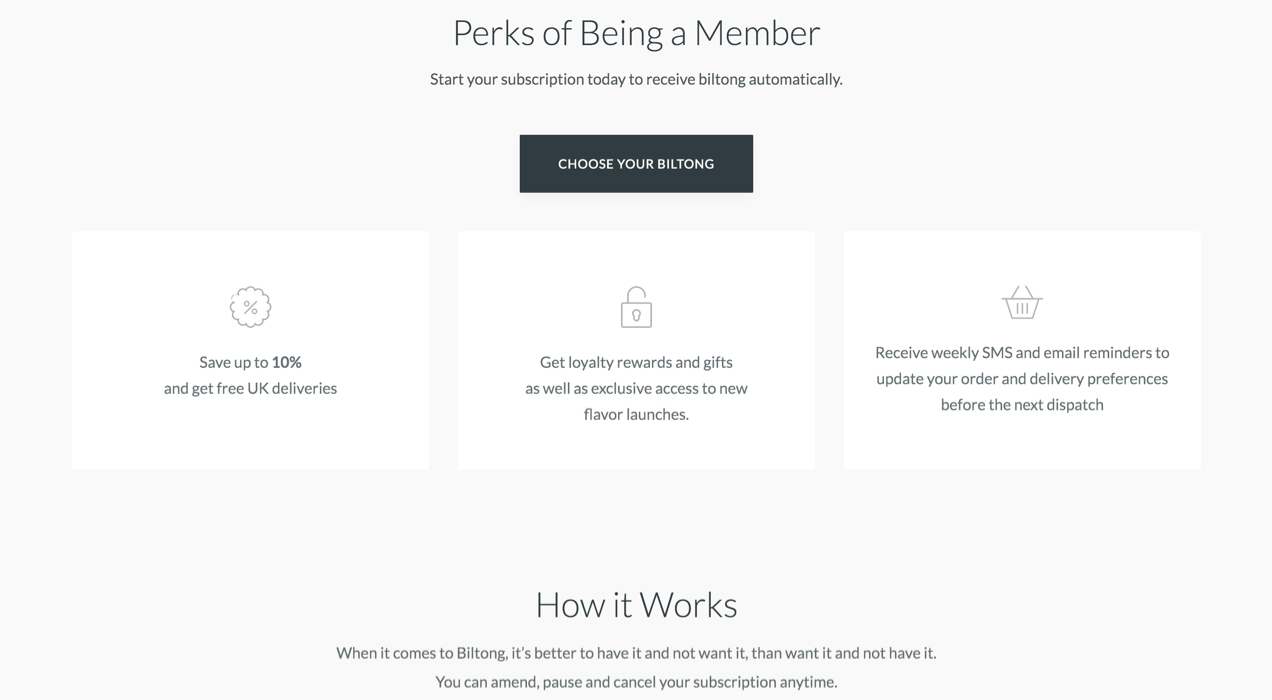Decades ago, ecommerce forever changed the way people shop. Who hasn’t researched products online before making a purchase? Ordered online for in-store pickup or delivery? Or pulled out a smartphone in a store where the product you needed wasn’t in stock?
But ecommerce looks different than it did in its early days. It continues to change with evolving customer behaviors and to take advantage of the latest technology.
Here are ten ecommerce trends to watch in 2024 and consider building into your business strategy. Keeping up with these trends can help you improve customer experiences, operate more efficiently, and stay competitive — all keys to your success.
Ecommerce trends with momentum going into 2024
1. Artificial intelligence (AI)
Using AI to improve operations and business outcomes isn’t just for large enterprises anymore. Advances in AI have made it more user-friendly and affordable for retailers of all sizes. Generative AI platforms like ChatGPT allow you to ask questions in natural language to get answers that will help you personalize customer experiences and make upsell and cross-sell offers that work. Additionally, generative AI can analyze customer, sales, and other data to create marketing content and social media posts that lead to greater engagement — without you having to do any of the writing.
AI can also automate processes, like screening calls to customer service. It can even give customers answers to simple questions so human agents can focus on tougher issues. AI also makes visual image search possible, so customers can snap a photo and find a link to your store to purchase it.
Fortune Business Insights predicts the market for artificial intelligence in retail will skyrocket at a phenomenal 34.1% compound annual growth rate (CAGR) from $5.5 billion in 2022 to $55.53 billion by 2030.
2. Augmented reality (AR)
Brick-and-mortar stores have had an advantage over ecommerce when it comes to allowing the customer to see firsthand how an item would look in their homes or how apparel looks when they try it on. AR is closing that gap.
For example, a furniture retailer can allow consumers to show a three-dimensional image of a chair or table over a real-time view of a room to see how it would fit and look. Similarly, AR can enable a shopper to “try on” a shirt or dress on their image.
Consumers are anxious for this technology to be widely available; 61% say they prefer retailers with AR experiences, and 71% say they’d shop more often if they could use AR.
3. Subscriptions
The subscription model is a set-it-and-forget-it way to enjoy streaming services and magazines is convenient for consumers. Moreover, subscriptions build a reliable recurring revenue stream for businesses. You don’t have to rely on customers remembering to reorder each month. Sales just keep coming in.
But the model doesn’t only work for companies that are typically associated with subscriptions. Retailers are also finding ways to make purchases monthly and bake in customer loyalty. Consumables, like daily vitamins, coffee or tea, and beauty products, are perfect candidates for subscriptions. When a customer places an order, make an offer to automatically restock them with these essentials each month and set up recurring payments.

However, you have other options to be a part of the subscription economy. Fashion and accessories, pet supplies, and other specialty retailers can send curated boxes, personalized for the customer, for an annual membership or monthly fee. It’s a way to keep customers engaged month to month — even adding an element of surprise — while keeping revenues coming in.
Research and Markets sees the ecommerce subscription economy growing, predicting the market will grow by $2.323 trillion from 2022 to 2028.
4. Omnichannel
Instead of selling only from their ecommerce website or a single marketplace, retailers will take more of an omnichannel approach in 2024. More ecommerce retailers are finding out where their target audience likes to browse and shop, and are doing business there.
It could mean joining the Amazon ecosystem or selling handcrafted or specialty products on Etsy. Another option is to dive into social commerce, selling directly from Pinterest or Instagram. The key to omnichannel ecommerce success, however, is creating a unified experience and clearly communicating your brand message wherever you sell.
Statista reports that multichannel ecommerce sales are growing. They totaled $350 billion in 2020 and are on pace to reach $575 billion this year. That growth is likely to continue into 2024 and beyond.
5. A tougher fight against fraud
Fraud costs the retail industry about $100 billion annually, a number that’s growing as ecommerce grows. When people aren’t face-to-face with a sales associate when they make a purchase, they have more opportunity to commit fraud. But retailers are fighting back with technology and processes that make it harder. The industry is also putting policies in place that keep a lid on chargeback or “friendly fraud.” That’s when consumers use their own credit cards but then contact the bank for a refund even though they received the products. They bet on the merchant not fighting back.
The good news is that AI and other advanced technologies can spot unusual behavior that may signal fraud. For instance, it may flag an order coming from a country that doesn’t match the customer’s ZIP code, several orders from the same IP address, or multiple high-value purchases in an hour or two. AI can also quickly analyze data and let the merchant know a customer has a suspicious chargeback history.
When technology raises red flags, the ecommerce system can stop transactions until customers prove their identity or decline the purchases completely.
6. Short form video and live streaming
Consumers like the autonomy of online shopping. Ecommerce lets them do product research and comparison shopping and control how to pick up their orders or have them delivered.
But sometimes, they like input from the experts. Product videos can answer questions shoppers may have about items they’re considering — and may even clue them in on some features they didn’t know the product has. Seeing a product in action can give the shopper more confidence and create more excitement over the purchase.

Additionally, you can build a social media following by live streaming about featured products or promotions your business is running.
eMarketer research found that 75% of U.S. consumers look for visual content on a regular basis before purchasing. If you provide it, more people in your target market may find your business.
7. Mobile-first design
Statista reports that 60% of all ecommerce sales worldwide originate on mobile devices. To improve shopping experiences on a small screen, ecommerce retailers are taking a different approach to website development: They’re designing for a smartphone first, then scaling the design for larger tablet, laptop, and PC screens. In the past, website design was primarily the other way around.
The logic is simple: It’s easier to create something appealing for a small screen rather than to design it for a big screen and attempt to scale it down. With a mobile-first approach, user experiences are good for all your customers, which could lead to less abandonment, more revenue, and increased loyalty.
Also, keep in mind that Google has transitioned to mobile-first indexing, so mobile-first design can help you improve SEO.
8. Voice searches
The number of voice assistant users has grown from 79.9 million in 2017 to 125.2 million in 2023. Furthermore, PwC research reveals that 68% of consumers use voice assistants to add items to a shopping list, and 50% use them to buy something. Ease of use, convenience, and hand-free shopping are driving this consumer behavior.
To make the most of this opportunity, remember that people don’t speak the same way they type. Learn all you can about the phrases your customers use in voice search, and add them to your website content. Also, remember to optimize searches for “near me” if you focus on selling to a local market.
9. Sustainability
Consumers are using their buying power to help protect the environment. For example, a study by McKinsey & Company found that 60% of consumers would pay more for a product with sustainable packaging. Additionally, research by NielsenIQ found that 78% say a sustainable lifestyle is important to them.
But the proof is in how these products perform. Products marketed as “sustainable” are growing almost three times faster than ones that aren’t.
In 2024, ecommerce retailers will see greater success if they adopt sustainable practices, work with suppliers who do, and clearly communicate that to their customers.
10. Payment choices
Your business strategy might be to provide the best quality or unique products. You might have a great loyalty program. Or you may focus on an omnichannel strategy. But one of the best things you can do to capture sales is to offer customers payment options.
PYMNTS surveyed consumers who shop digitally and found nearly half say the ability to use their preferred payment method is very or extremely important. Moreover, about another 12% say it’s the most important factor in deciding where to shop.
If you currently only accept credit or debit card payments, research your market to learn which other payment methods could help you capture sales.

Depending on your market and the makeup of your customer base, you could benefit from:
- ACH payments: This method lets customers pay directly from their bank accounts, and it’s growing in popularity; Nacha reports that the total volume of ACH payments has increased by at least $1 trillion each year from 2012 to 2022.
- Buy now, pay later (BNPL): With this option, customers can divide payments for high-value purchases into three or four payments over several weeks, making them more affordable (and maybe decreasing shopping cart abandonment). Fortune Business Insights sees the BNPL market growing at a high CAGR, 22%, from 2023 to 2030 to reach $122.19 billion.
- Mobile wallets: In the U.S., 53% of consumers use digital wallets more than traditional payment methods. Some more information you may also be interested in is that 47% say they spend more money when using a digital wallet — and 51% say they’d stop shopping with a merchant that doesn’t accept these payments.
- Peer-to-peer: The adoption of P2P payments, e.g., Venmo, Zelle, Cash App, and PayPal, is another growing payment trend. This method, which many people used, for example, to reimburse friends or family for their part of a restaurant check or to give a gift, is becoming a more common way to pay merchants.
Be on trend in 2024
Operating a successful ecommerce business takes continually adapting to changes. It’s smart to see what’s trending in your market and to adapt. Keeping these ecommerce trends in mind as you plan your 2024 business strategy can help your ecommerce technology work better, make your customers happier, and build your business.

Thanks for sharing the e-commerce trends for 2024. The emphasis on AI, AR, and omnichannel strategies reflects the dynamic nature of the industry. The subscription model’s adaptability, focus on fraud prevention, and the rise of short-form videos are noteworthy. The mobile-first approach, voice searches, sustainability, and diverse payment options showcase a holistic approach to evolving consumer preferences.
Thanks for the thoughts, Michael!